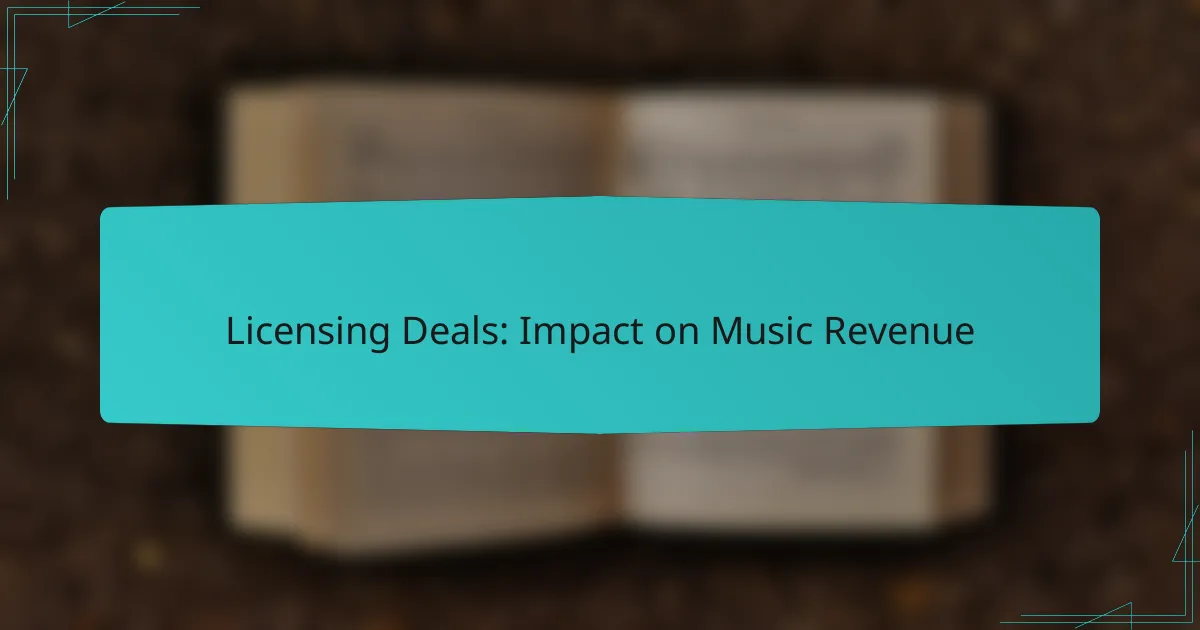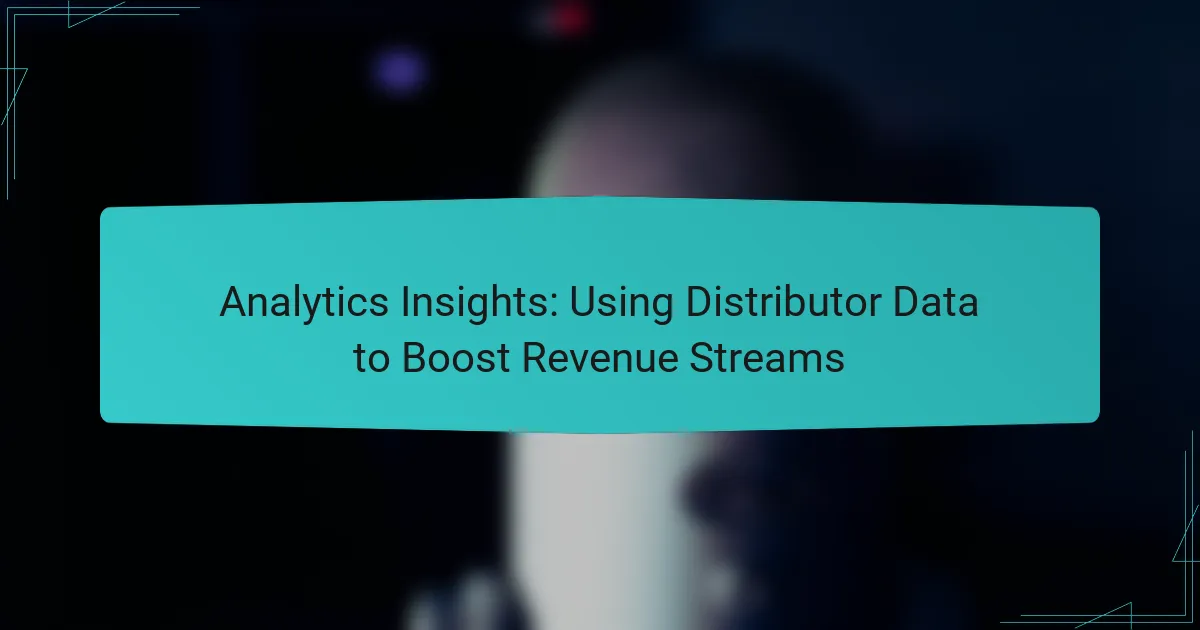In the ever-evolving landscape of digital music, real-time tracking platforms have become essential tools for artists and labels seeking to monitor their revenue effectively. These platforms offer immediate insights into streaming statistics, sales data, and audience engagement, empowering users to make informed decisions and adapt their strategies. By prioritizing features such as ease of use and comprehensive analytics, musicians can optimize their earnings and enhance their distribution efforts.
![]()
What are the best real-time tracking platforms for digital music revenue?
The best real-time tracking platforms for digital music revenue include tools that provide artists and labels with immediate insights into their earnings and performance metrics. These platforms help monitor streaming statistics, sales data, and audience engagement, allowing for informed decision-making and strategy adjustments.
Soundcharts
Soundcharts offers comprehensive tracking of digital music revenue by aggregating data from various streaming services and social media platforms. It provides real-time analytics on song performance, audience demographics, and market trends, making it a valuable tool for artists looking to optimize their reach.
Key features include customizable dashboards and alerts for significant changes in metrics. This allows users to respond quickly to shifts in their audience engagement or revenue streams.
Chartmetric
Chartmetric is a powerful platform that focuses on music analytics, providing insights into streaming performance and social media engagement. It tracks data across multiple platforms, helping artists understand their market position and identify growth opportunities.
With features like playlist tracking and audience insights, Chartmetric enables users to make data-driven decisions. Its user-friendly interface allows for easy navigation through complex data sets, making it accessible for both new and experienced users.
Spotify for Artists
Spotify for Artists is an essential tool for musicians on the Spotify platform, offering real-time data on streams, listener demographics, and revenue estimates. It allows artists to manage their profiles and understand how their music is performing in various regions.
Using this platform, artists can access detailed analytics about their most popular tracks and playlists, helping them tailor their promotional efforts effectively. Regularly checking this data can lead to better engagement with fans and increased revenue.
Apple Music Analytics
Apple Music Analytics provides artists with insights into their performance on the Apple Music platform, including streaming data and listener trends. This tool is crucial for understanding how songs are performing and where listeners are located.
Artists can view metrics such as total plays, average daily listeners, and song engagement. This information can guide marketing strategies and help artists connect more effectively with their audience.
Next Big Sound
Next Big Sound focuses on tracking the online presence and performance of artists across various platforms, including streaming services and social media. It provides insights into audience growth and engagement, helping artists gauge their popularity and potential revenue streams.
With features like predictive analytics, Next Big Sound helps users anticipate trends and make proactive decisions. This platform is particularly useful for identifying emerging opportunities in the digital music landscape.
![]()
How do real-time tracking platforms enhance revenue monitoring?
Real-time tracking platforms significantly improve revenue monitoring by providing immediate access to earnings data, enabling artists and labels to make timely decisions. These platforms utilize advanced analytics to deliver insights that can directly impact financial outcomes.
Immediate insights into earnings
Real-time tracking platforms offer instant visibility into earnings, allowing users to see how much revenue is generated from various streams like streaming services, downloads, and live performances. This immediacy helps artists understand which songs or albums are performing well and where they should focus their promotional efforts.
For example, an artist can quickly identify a spike in revenue from a specific track following a social media campaign, enabling them to strategize future marketing efforts effectively. This level of insight can lead to more agile financial planning and resource allocation.
Data-driven decision making
With real-time data at their fingertips, artists and managers can make informed decisions based on current trends rather than relying on outdated reports. This data-driven approach allows for adjustments in marketing strategies, tour planning, and even song releases based on what is resonating with audiences.
For instance, if a particular genre is trending in a specific market, an artist can pivot their focus to align with those preferences, potentially increasing their revenue. Utilizing analytics tools can help identify these trends quickly and accurately.
Improved royalty tracking
Real-time tracking platforms enhance the accuracy of royalty calculations by providing detailed breakdowns of revenue sources. This transparency helps ensure that artists receive fair compensation for their work, as they can monitor how their music is being consumed across various platforms.
Additionally, these platforms often integrate with existing accounting systems, streamlining the royalty payment process. Artists can track their earnings from different sources, such as Spotify or Apple Music, and ensure that they are receiving the correct amounts based on their contracts.
![]()
What features should you look for in a tracking platform?
When selecting a tracking platform for monitoring your digital music revenue, prioritize features that provide real-time insights, ease of use, and comprehensive analytics. These elements will help you effectively manage your earnings and make informed decisions about your music distribution strategy.
Real-time data updates
Real-time data updates are crucial for tracking your digital music revenue accurately. This feature allows you to see your earnings as they happen, giving you immediate feedback on the performance of your tracks across various platforms. Look for platforms that refresh their data frequently, ideally within minutes, to ensure you have the most current information.
Consider platforms that offer notifications for significant changes in revenue or streaming activity. This can help you respond quickly to trends, such as a sudden spike in plays or a drop in earnings, allowing you to adjust your marketing strategies accordingly.
User-friendly interface
A user-friendly interface is essential for efficiently navigating your tracking platform. Choose a system that is intuitive and easy to use, minimizing the learning curve and allowing you to focus on analyzing your data rather than figuring out how to access it. Look for dashboards that present information clearly and concisely.
Platforms that offer customizable views can enhance usability by allowing you to prioritize the metrics that matter most to you. Ensure that the interface is accessible on various devices, including smartphones and tablets, so you can monitor your revenue on the go.
Integration with streaming services
Integration with popular streaming services is a vital feature for any tracking platform. Ensure the platform connects seamlessly with major services like Spotify, Apple Music, and YouTube, as this will provide a comprehensive view of your earnings across different channels. The more services a platform integrates with, the better your understanding of your overall revenue.
Check if the platform supports automatic data import from these services, which can save you time and reduce the risk of errors. This feature allows you to focus on analyzing your revenue rather than manually inputting data from multiple sources.
Comprehensive analytics tools
Comprehensive analytics tools are essential for gaining insights into your digital music revenue. Look for platforms that offer detailed reports on earnings, listener demographics, and streaming trends. These insights can help you identify which tracks are performing well and where to focus your promotional efforts.
Additionally, consider platforms that provide visualizations such as graphs and charts, making it easier to interpret data at a glance. The ability to segment data by time periods or specific tracks can also enhance your analysis, helping you make data-driven decisions to optimize your music distribution strategy.
![]()
What are the pricing models for real-time tracking platforms?
Real-time tracking platforms for digital music revenue typically use three main pricing models: subscription-based pricing, freemium models, and pay-per-use options. Each model has its own advantages and considerations, allowing users to choose based on their needs and budget.
Subscription-based pricing
Subscription-based pricing involves paying a recurring fee, usually monthly or annually, for access to the platform’s features. This model often includes tiered plans, where higher tiers provide additional functionalities such as advanced analytics or priority support.
For example, a basic plan might cost around $10 to $30 per month, while premium plans could range from $50 to $200 monthly, depending on the features offered. This model is beneficial for users who want consistent access and ongoing updates without worrying about variable costs.
Freemium models
Freemium models allow users to access basic features at no cost while offering premium features for a fee. This approach enables users to test the platform before committing financially, which can be particularly appealing for independent artists or small labels.
However, the limitations of free versions can restrict access to essential tools, such as detailed revenue reports or real-time notifications. Users should evaluate whether the free features meet their needs or if upgrading is necessary for effective revenue tracking.
Pay-per-use options
Pay-per-use options charge users based on their actual usage of the platform, such as the number of tracks monitored or reports generated. This model can be advantageous for those who may not require constant access, as costs are directly tied to usage.
For instance, users might pay a few cents per track or a flat fee for each report generated. This flexibility can help manage costs, but users should be cautious of unexpected charges if their usage increases significantly over time.
![]()
How do real-time tracking platforms compare?
Real-time tracking platforms for digital music revenue provide artists and labels with immediate insights into their earnings from streaming and sales. These platforms vary in features, pricing, and data accuracy, making it essential to understand their differences to choose the right one.
Features
Real-time tracking platforms typically offer features such as revenue analytics, streaming statistics, and audience demographics. Some platforms may include advanced tools like predictive analytics or integration with social media channels. When evaluating features, consider what specific data will help you make informed decisions about your music strategy.
Pricing
Pricing for real-time tracking platforms can range from free basic services to subscription models costing hundreds of dollars per month. Some platforms charge a percentage of revenue generated, while others may have a flat fee. Assess your budget and the potential return on investment when selecting a platform.
Data Accuracy
The accuracy of data provided by real-time tracking platforms can vary significantly. Some platforms may offer near-instantaneous updates, while others might have delays of several hours or even days. Look for platforms that are transparent about their data sources and provide regular updates to ensure you are working with reliable information.
Integration
Integration capabilities are crucial for maximizing the effectiveness of real-time tracking platforms. Many platforms allow integration with digital distribution services, social media, and accounting software. Ensure that the platform you choose can seamlessly connect with your existing tools to streamline your workflow.
User Experience
A user-friendly interface can greatly enhance your experience with real-time tracking platforms. Look for platforms that offer intuitive dashboards, easy navigation, and customizable reports. A good user experience can save you time and help you focus on your music rather than struggling with the technology.


